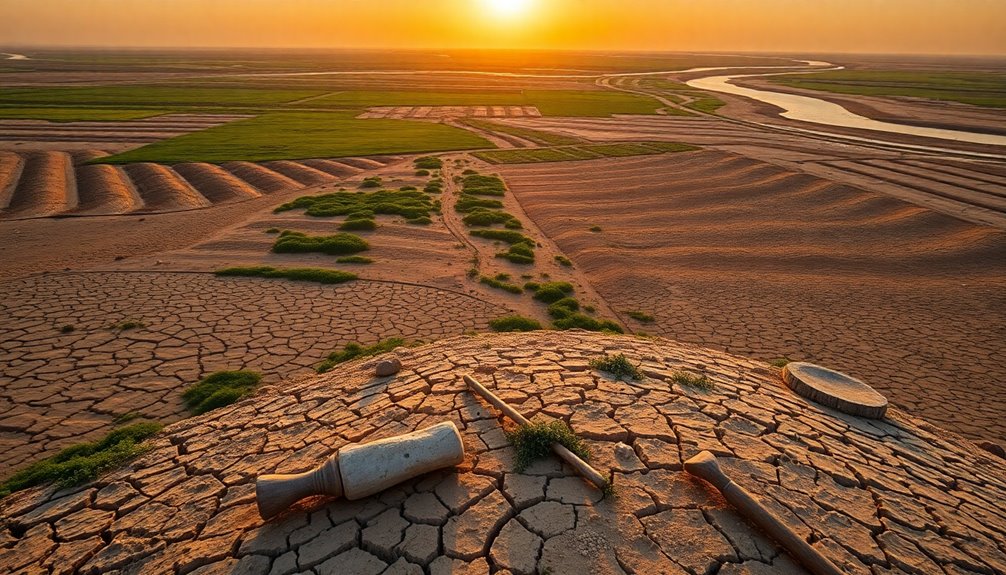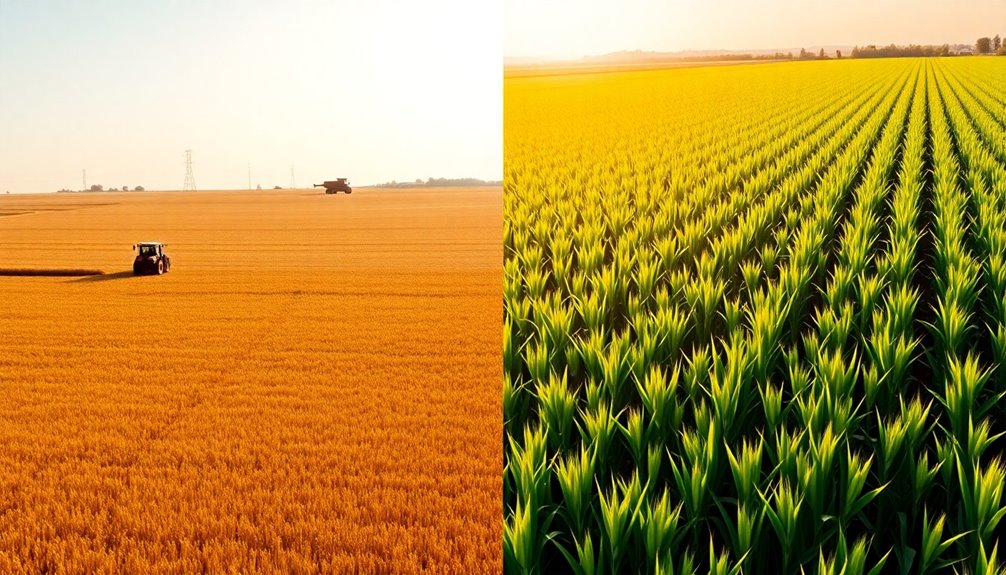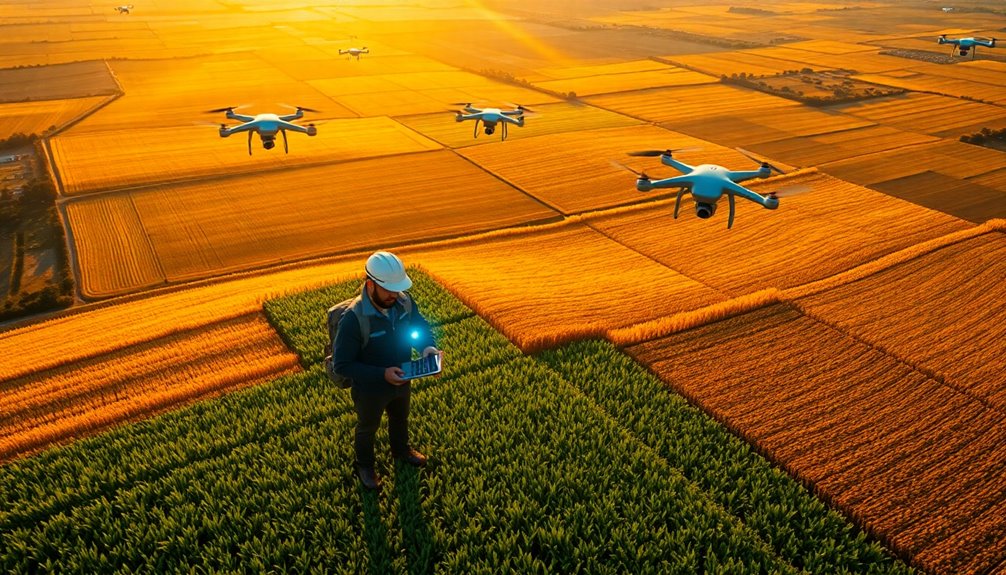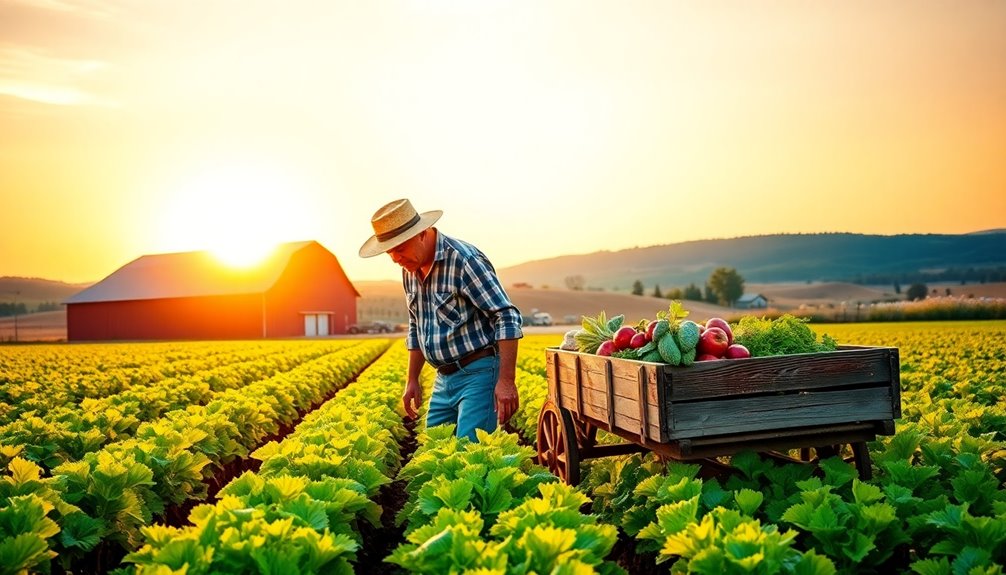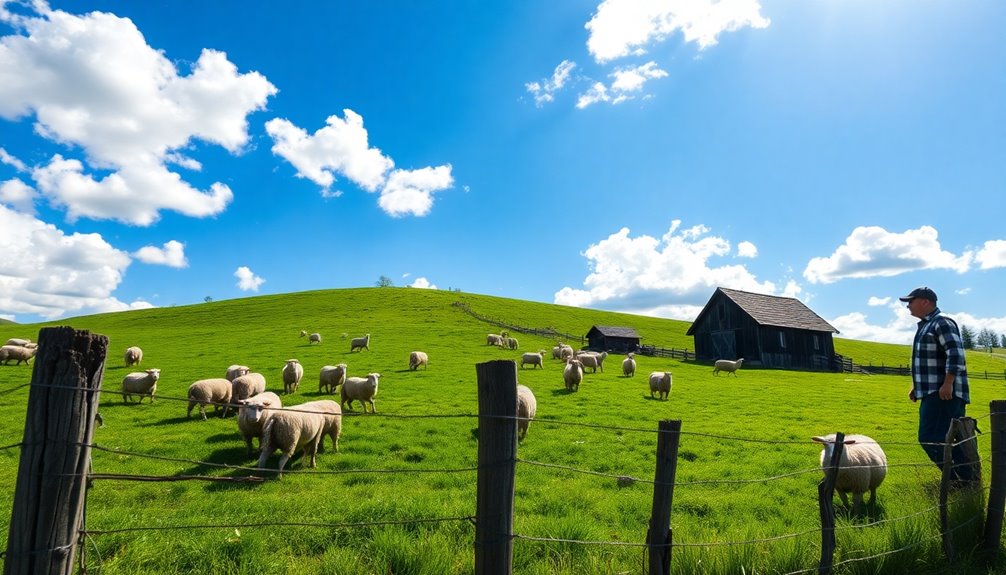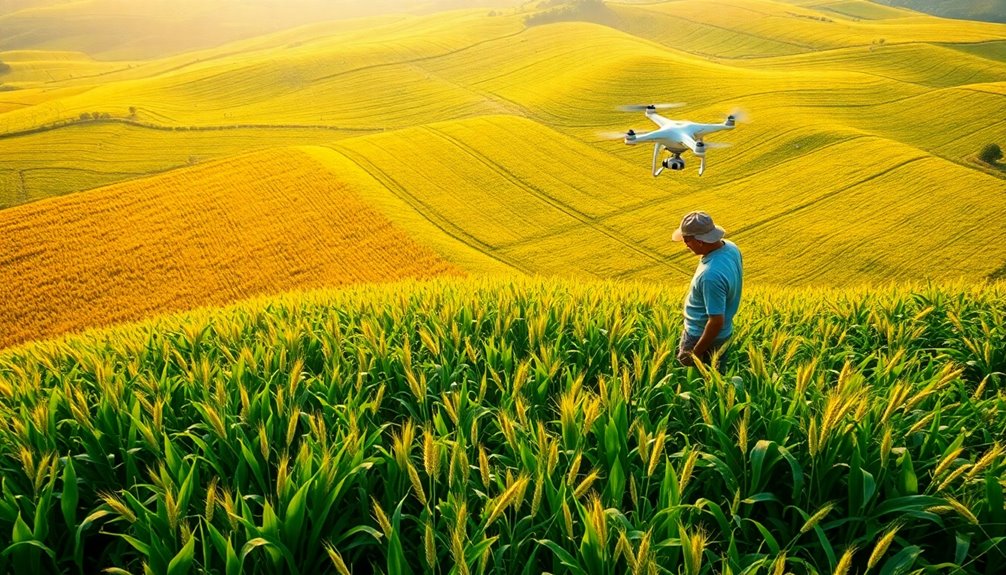One big problem with Mesopotamia's farming techniques was unpredictable flooding from the Tigris and Euphrates Rivers. These floods often destroyed crops and settlements, leading to food shortages. They also left behind nutrient-rich soil, but excessive watering caused harmful salt buildup, reducing soil fertility. Traditional plowing couldn't combat salinization well, leaving farmers struggling to meet growing demands. Urbanization intensified these issues, concentrating land ownership and creating social disparities. Despite advances in irrigation and crop management, these challenges persisted and shaped society. If you're curious about how these problems influenced their civilization, there's much more to explore.
Key Takeaways
- Unpredictable flooding from the Tigris and Euphrates Rivers caused catastrophic crop damage and destroyed settlements, threatening farmers' livelihoods.
- Salinization from overwatering reduced soil fertility, significantly impacting agricultural productivity and food security.
- Traditional plowing techniques struggled to manage ongoing soil salinity, leading to diminished crop yields.
- Concentrated land ownership among temples and kings exacerbated social disparities, limiting access to fertile land for many farmers.
- Rapid urbanization increased food demand beyond local farming capacity, resulting in food shortages and heightened social inequality.
Flooding Challenges
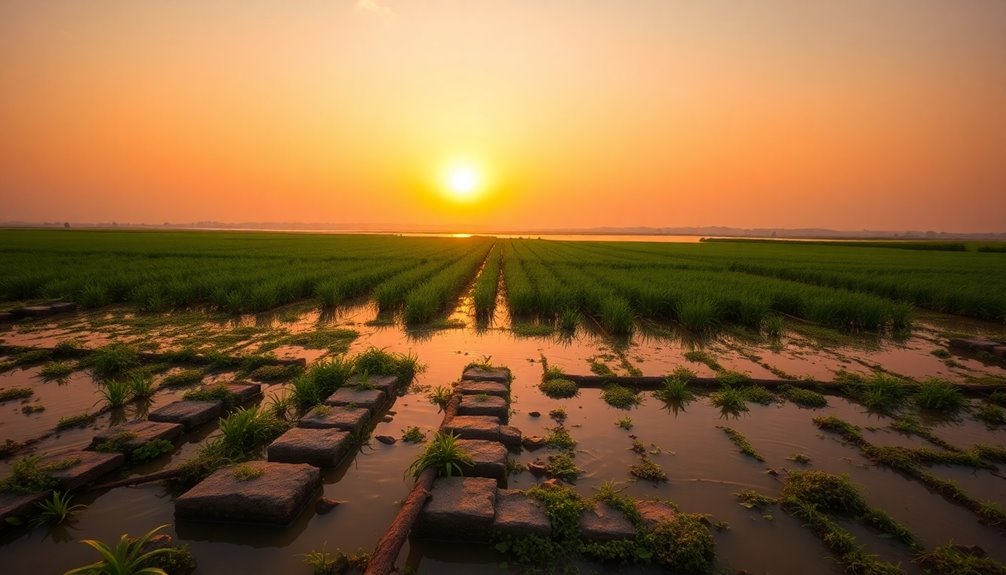
Flooding challenges in Mesopotamia have long posed significant threats to farmers' livelihoods. Unpredictable flooding from the Tigris and Euphrates Rivers often resulted in crop damage and destroyed settlements, complicating your agricultural planning.
While catastrophic floods could devastate your fields, they also left behind nutrient-rich soil that could boost future growth. To cope, you'd need to engage in community cooperation, sharing knowledge and resources.
Effective flood management was essential, leading to the construction and maintenance of irrigation systems designed to mitigate flood risks. These challenges pushed you to continually adjust your agricultural practices, seeking a balance between the benefits of fertile soil and the dangers of sudden inundation.
Adapting was key to surviving in this unpredictable environment.
Irrigation System Innovations
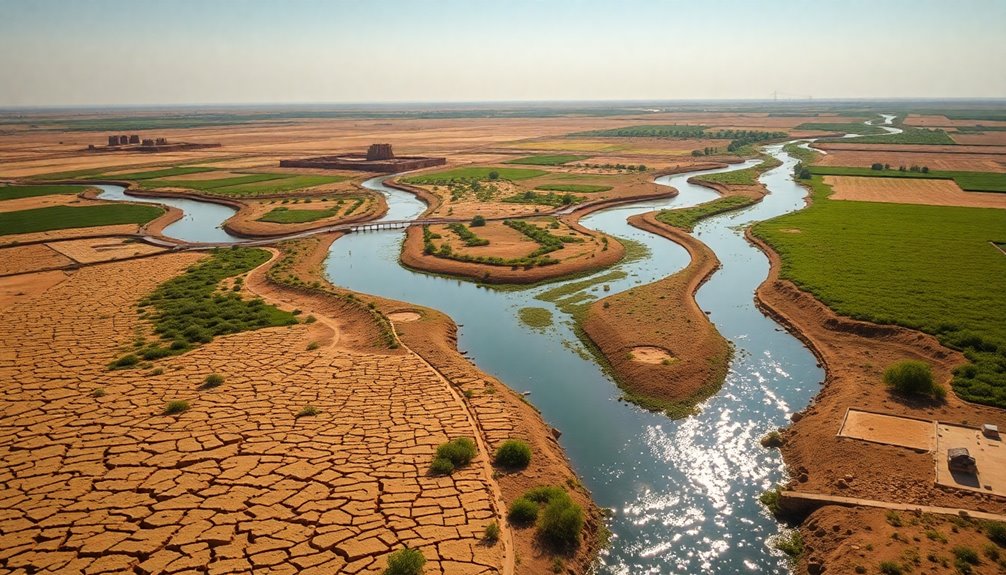
Irrigation systems transformed agriculture in Mesopotamia, allowing farmers to thrive in an otherwise challenging environment. By developing extensive canals, ditches, and reservoirs, you effectively managed the water supply necessary for farming in the arid climate.
These innovations evolved from small shadufs to larger networks by the mid-first millennium BCE, notably boosting agricultural productivity. You cultivated salt-tolerant crops like barley, crucial as soil salinity became an issue from overwatering.
Utilizing oxen to transport water to your farmlands showcased the integration of animal labor in irrigation. Furthermore, the collaborative efforts required to maintain these systems reflected early community organization and highlighted the necessity for collective action in your agricultural practices, ensuring a sustainable food source in a demanding landscape.
Soil Management Issues
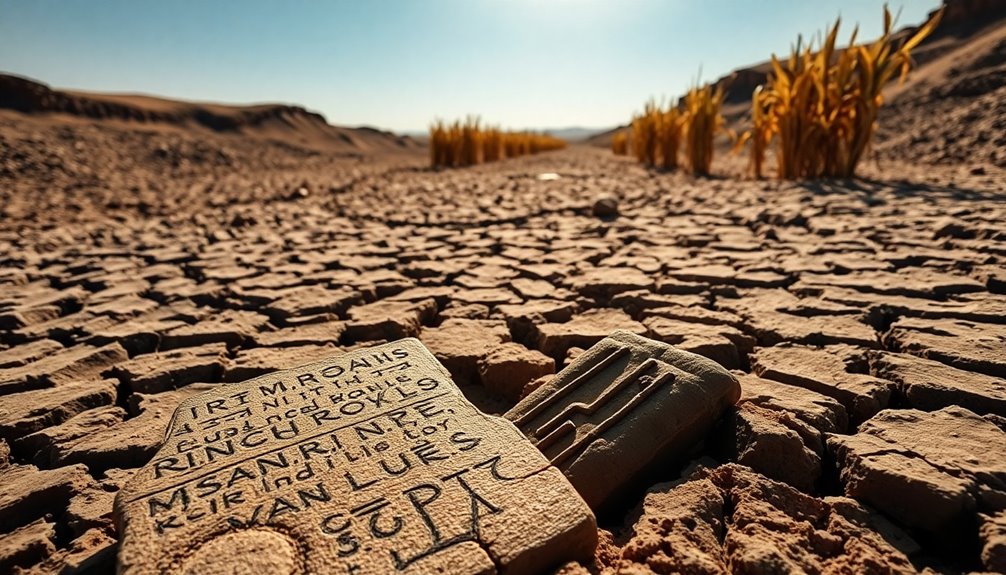
You're about to see how salt buildup from overwatering severely impacted soil fertility in ancient Mesopotamia.
As urbanization progressed, land ownership concentrated among temples and kings, further straining agricultural productivity.
These soil management issues not only affected crop yields but also highlighted growing social disparities among workers.
Salt Buildup Consequences
As Mesopotamian agriculture grew, farmers faced mounting challenges from salt buildup in the soil, which wreaked havoc on crop yields. Overwatering from irrigation systems contributed to increasing soil salinity, severely impacting soil fertility and agricultural output.
Here are some consequences of this issue:
- Reduced crop yields hindered food security for urban populations.
- Traditional plowing techniques couldn't effectively manage ongoing salinization.
- Concentrated land ownership among elites worsened social class disparities, leaving poorer farmers vulnerable.
- Urbanization intensified the demand for agricultural products, straining already compromised soil.
Despite advancements like bronze-bladed plows, the persistent problem of salt buildup remained a critical challenge, threatening the very foundation of Mesopotamian society.
Urbanization and Soil Fertility
Urban expansion in ancient Mesopotamia created a complex interplay between population growth and soil fertility, challenging farmers to keep pace with increasing food demands. Over time, urbanization and extensive irrigation systems led to agricultural decline due to salt buildup in the soil. Social class disparities worsened as land ownership concentrated among temples and kings, straining sustainable farming efforts. While innovations like bronze-bladed plows improved soil management, they couldn't fully counteract the depletion of soil nutrients.
| Challenges | Consequences |
|---|---|
| Urbanization | Strained soil fertility |
| Irrigation systems | Salt buildup |
| Agricultural decline | Increased food demands |
| Social class disparities | Unequal land access |
Ultimately, soil infertility became a critical challenge for Mesopotamian farmers.
Population Pressure Dynamics
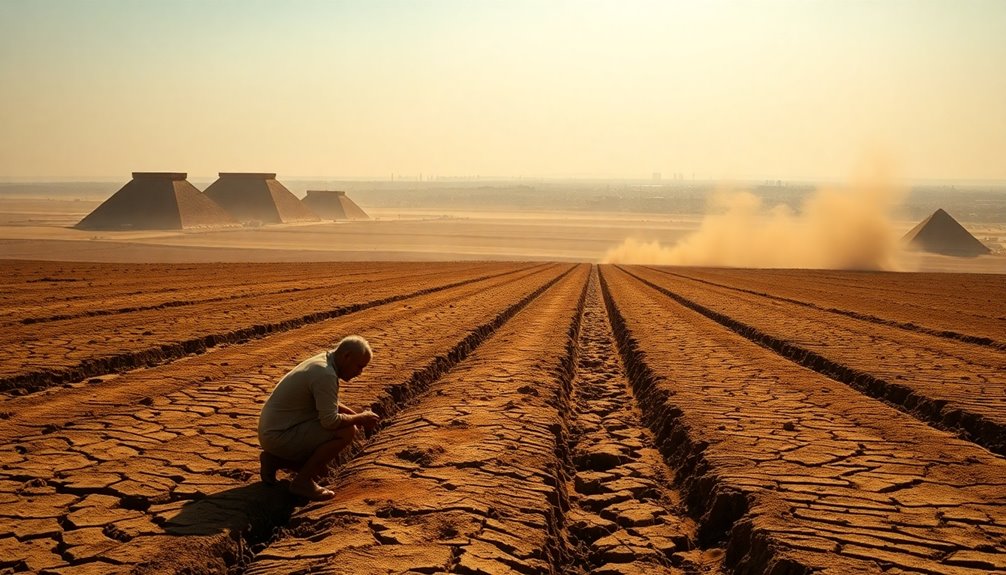
As urbanization in Mesopotamia ramped up, you'd notice a sharp rise in food demand that often outstripped what local farming could sustainably provide.
The inefficiencies in farming techniques became glaringly apparent, leading to shortages and widening social gaps.
This pressure forced society to rethink its agricultural practices, but the pace of change struggled to keep up with the growing population.
Urbanization and Food Demand
The rapid growth of cities in Mesopotamia created a pressing need for food that outstripped traditional agricultural methods. As urbanization intensified, the following challenges emerged:
- Increased population pressure demanded more efficient food production.
- Social disparities widened due to concentrated land ownership among temples and kings, leading to worker exploitation.
- Existing agricultural practices struggled to keep pace, resulting in diminished yields and food shortages.
- The need for advanced irrigation systems and effective crop management became critical to sustain growing urban populations.
Communities sought to adapt by enhancing sustainable agricultural practices, but the strain on resources highlighted the urgent need for innovation in farming techniques.
Urbanization not only transformed society but also shaped the trajectory of Mesopotamian agriculture.
Inefficient Farming Techniques
During the height of Mesopotamia's urban expansion, farming techniques struggled to keep pace with the rising population's food demands.
You'd notice that inefficient farming techniques were unable to meet the needs of densely populated cities. As population pressure mounted, agricultural output dwindled, revealing weaknesses in water management systems that failed to adequately irrigate the growing farmland.
The concentration of land ownership among temples and kings deepened social disparities, leaving laborers to toil harder for insufficient yields.
This imbalance made it clear that without innovative strategies for food production, the burgeoning society faced dire challenges. The urgent need for more efficient farming methods became critical, underpinning the complexities of sustainability amid rapid urban growth.
Historical Significance of Agriculture
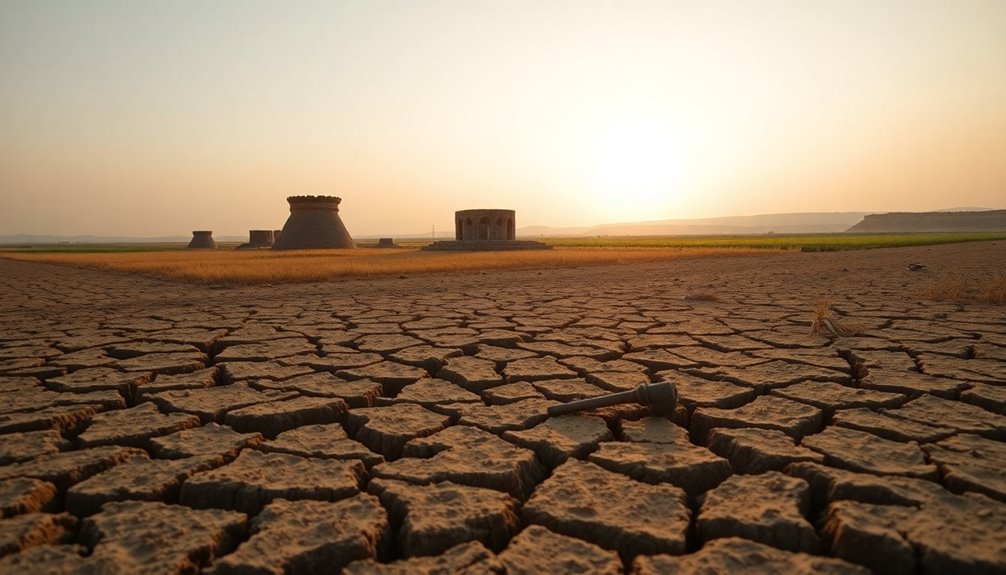
Agriculture's historical significance in Mesopotamia can't be overstated; it laid the groundwork for some of the world's earliest civilizations. Through advanced techniques, such as irrigation, the Mesopotamians transformed their environment, leading to:
- Increased agricultural surplus from staple crops like barley and wheat.
- The growth of urban centers, which became hubs of trade and culture.
- Social stratification as land ownership concentrated among temples and kings, creating class disparities.
- A need for record-keeping and administration, spurring the development of early writing systems.
These developments guaranteed economic stability and sustained the population, showcasing how agriculture was integral to the evolution of complex societies in Mesopotamia, shaping the course of human history.
Origins of Mesopotamian Agriculture
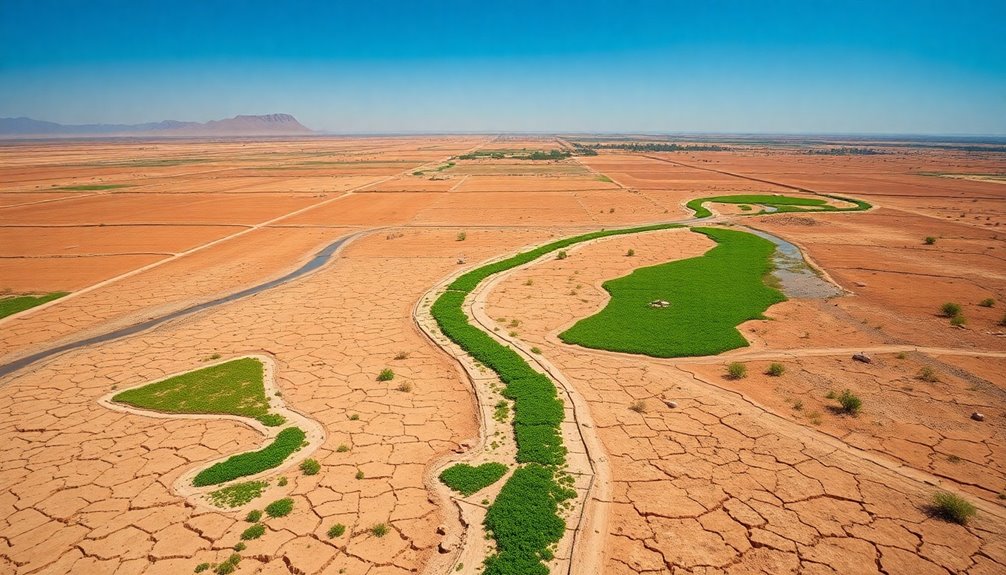
In exploring the historical significance of agriculture, it's important to recognize its origins in Mesopotamia, which date back around 12,000 years. During the Neolithic Revolution, communities shifted from nomadic lifestyles to settled farming, laying the groundwork for advanced agricultural practices. The Fertile Crescent became pivotal, with early domestication of crops like wheat and barley around 9000 BCE.
| Key Milestones | Date | Significance |
|---|---|---|
| Cultivation of Figs | 11,300 BCE | Early fruit cultivation |
| Domestication of Cattle | 8,500 BCE | Change to livestock farming |
| Development of Irrigation | 6,000 BCE | Managing water for crops |
| Rise of Complex Societies | 3,000 BCE | Urbanization and societal growth |
These innovations shaped Mesopotamian agriculture, enabling flourishing communities despite challenging climate conditions.
Agricultural Practices in Mesopotamia
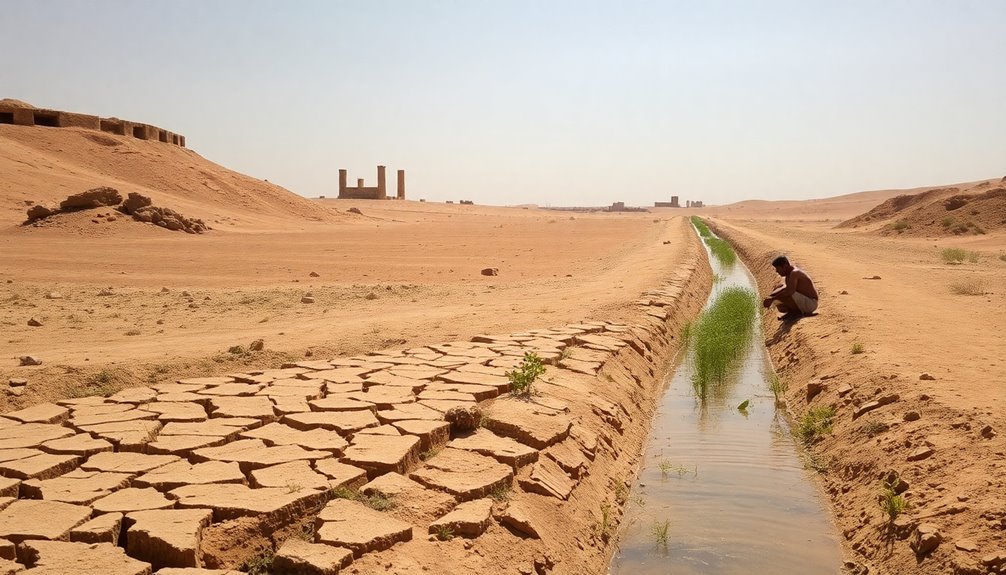
While the harsh climate of Mesopotamia posed significant challenges, the Sumerians ingeniously developed agricultural practices that transformed their environment into a thriving agricultural hub.
They utilized advanced irrigation systems, managing water supply effectively. Key components of their agricultural practices included:
- Irrigation: Canals and reservoirs to direct water.
- Crops: Primarily barley and wheat, with barley preferred for its salt tolerance.
- Livestock: Raising sheep, goats, and cows to supplement the diet.
- Trade Networks: Facilitating the exchange of goods, boosting urban centers' economies.
Despite innovations like bronze-bladed plows, challenges like soil salinity persisted.
The Sumerians' ability to adapt their methods laid the foundation for future agricultural advancements in the region.
Impact on Society and Empire
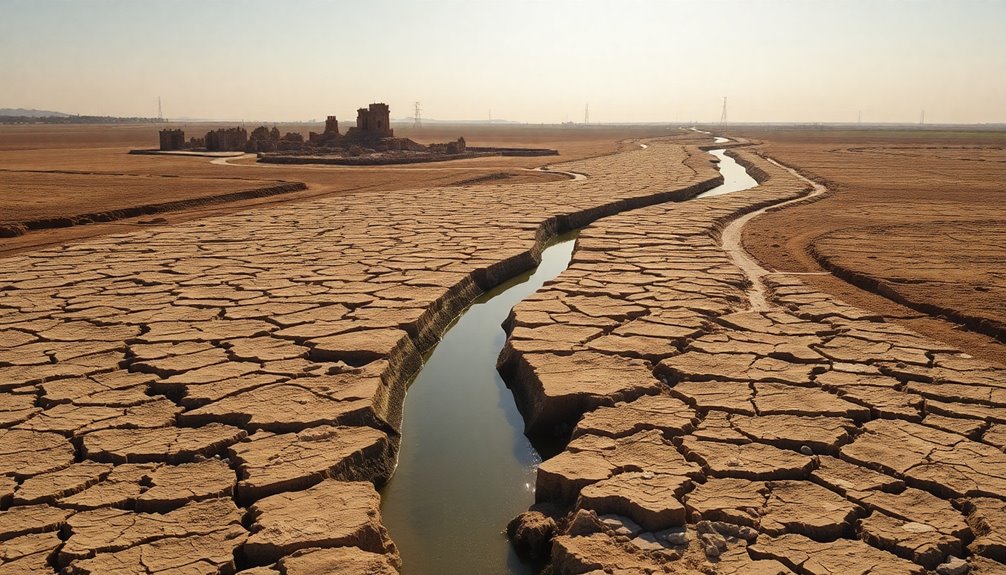
Farming practices in Mesopotamia fundamentally reshaped society and the trajectory of empires. The agricultural surplus allowed for the development of an urban society, where centralized states relied on crop yields and taxation to drive economic growth. However, this reliance created social disparities, as land ownership became concentrated among temples and kings, exacerbating class divisions.
| Factors | Positive Impact | Negative Impact |
|---|---|---|
| Agricultural Surplus | Supported urban growth | Increased social disparities |
| Irrigation Systems | Improved crop yields | Required extensive labor |
| Early Community Org. | Fostered cooperation | Limited by land ownership |
| Economic Growth | Strengthened empires | Exacerbated inequality |
These dynamics laid the groundwork for powerful empires like Akkad and Babylon.
Frequently Asked Questions
What Was the Biggest Problem in Mesopotamia?
The biggest problem in Mesopotamia was the unpredictable nature of the Tigris and Euphrates Rivers.
You'd face frequent flooding that could devastate crops, making it tough to plan your farming activities.
Additionally, as urbanization surged, the demand for food increased, straining your agricultural methods.
Over time, you'd find that extensive irrigation led to soil salinity, further complicating your efforts to maintain fertile land for successful harvests.
What Was the Biggest Challenge the People in Mesopotamia Faced When They First Started Farming?
When you first start farming in Mesopotamia, you struggle with unpredictable flooding from the Tigris and Euphrates Rivers.
These floods can destroy your crops and settlements, making it tough to plan for the future. While the floods enrich the soil, they also lead to immediate crop failures.
You quickly realize that adapting your strategies and working together with your community is crucial to overcome these challenges and guarantee a stable food supply.
What Farming Techniques Did the Mesopotamians Use?
You might think Mesopotamian farming was simple, but it was anything but!
They developed advanced irrigation systems with canals and reservoirs to manage water supply.
Using bronze-bladed plows, they improved soil management while cultivating key crops like barley and wheat.
Their harvesting techniques involved sickles for cutting, drying, and threshing, showcasing their sophisticated practices.
These innovations not only boosted productivity but also supported the growth of urban centers in the region.
What Problems Did Farmers in Mesopotamia Face and How Did They Solve These Problems With Technological Innovations?
As a farmer in ancient Mesopotamia, you faced unpredictable floods and droughts that threatened your crops.
To combat flooding, you developed community-based flood management systems and irrigation canals, ensuring a steady water supply.
When soil salinity became an issue, you adapted by using bronze plows and practicing crop rotation.
These technological innovations helped you maintain productivity and support your growing community, showcasing your resilience and ingenuity in the face of environmental challenges.
Conclusion
In summary, while Mesopotamia's farming techniques faced significant challenges, like unpredictable flooding and soil management issues, they also sparked vital innovations in irrigation and agricultural practices. You might think these problems outweighed the benefits, but it's important to recognize how they shaped a thriving society and laid the groundwork for future civilizations. The resilience and adaptability of the people in the face of adversity ultimately fueled their growth, proving that challenges can lead to remarkable advancements.

